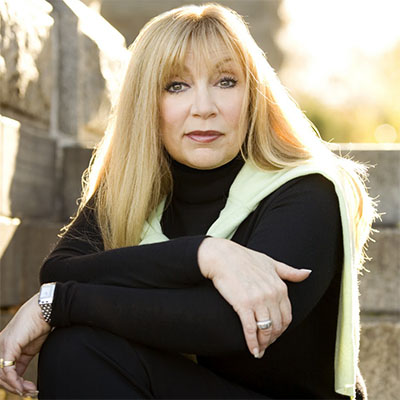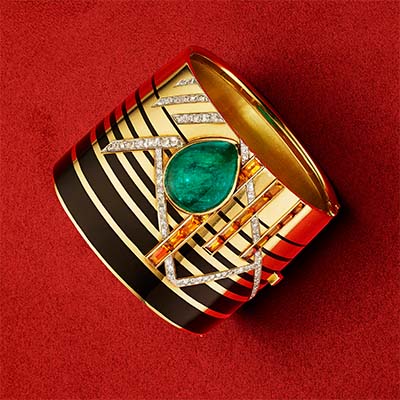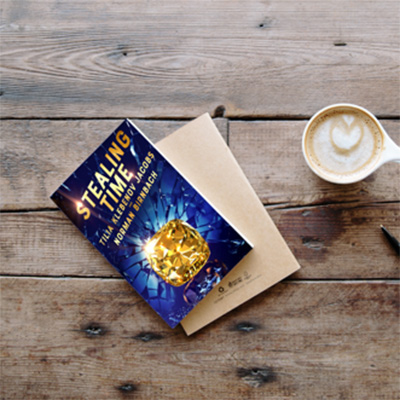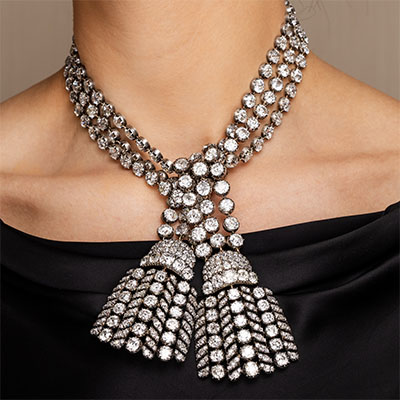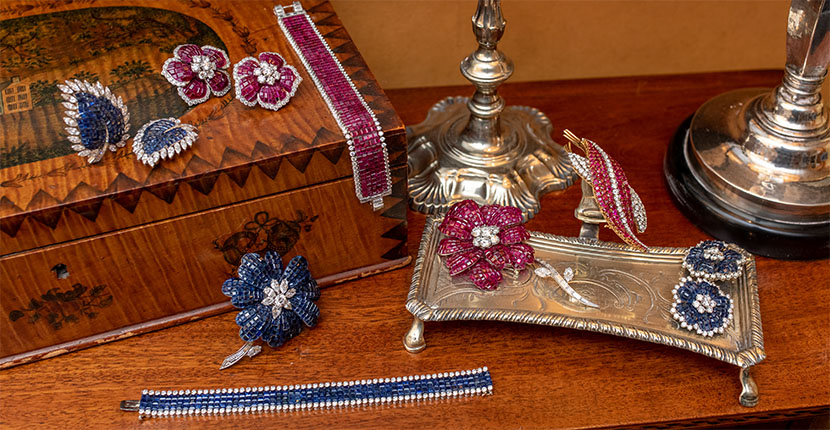
The Van Cleef & Arpels Mystery-Set jewels being sold at Sotheby's in The Wolf Family Collection of Exceptional Jewels. Photo Sotheby's
Jewelry History
At Auction: The Wolf Family Jewelry Collection
The treasures are part of the historic 'Spirit of America' sale at Sotheby’s
April 18, 2023—Among the paintings by Winslow Homer, the silver by Paul Revere and the creations of Frank Lloyd Wright in The Wolf Family Collection being sold Sotheby’s includes a vast array of 20th century jewelry. Erving and Joy Wolf approached jewelry in just about the same way they did every category in their landmark collection being sold at Sotheby’s in “The Wolf Family Collection: The Spirit of America” auction taking place this month. Acquiring it was something they enjoyed doing together, thoughtfully and with a sense of purpose.
The Wolfs gravitated towards exquisite and iconic mid-20th century designs. Big gemstones alone were not enough to pique their interest, but the gems in the jewels they considered had to be beautiful. Proportions needed to be perfection and the piece had to have a relatively grand sense of scale. Who made the jewels was of the utmost importance.
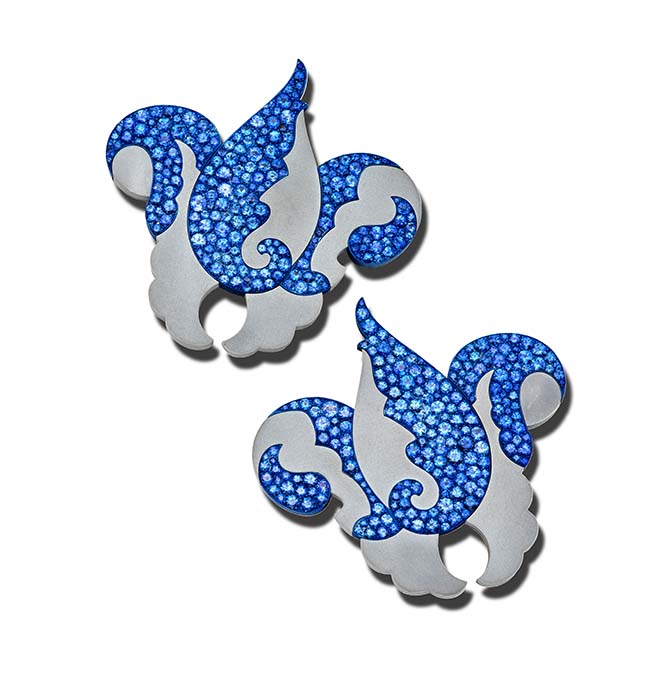
Erving and Joy focused their attention on signed pieces from important Houses. Top American jewelers—Harry Winston, David Webb and Oscar Heyman & Bros.—were among their favorites. A couple of JAR jewels, conceived by the American designer Joel Arthur Rosenthal who lives and works in Paris, are in the collection.
There are many Van Cleef & Arpels jewels made in New York as well as pieces manufactured by the French firm in the City of Lights. Legendary Italian and French establishments including Bulgari, Cartier and René Boivin are represented. And French talent Jean Schlumberger, who became a byline designer at Tiffany in 1956, was a designer Erving and Joy admired and collected.
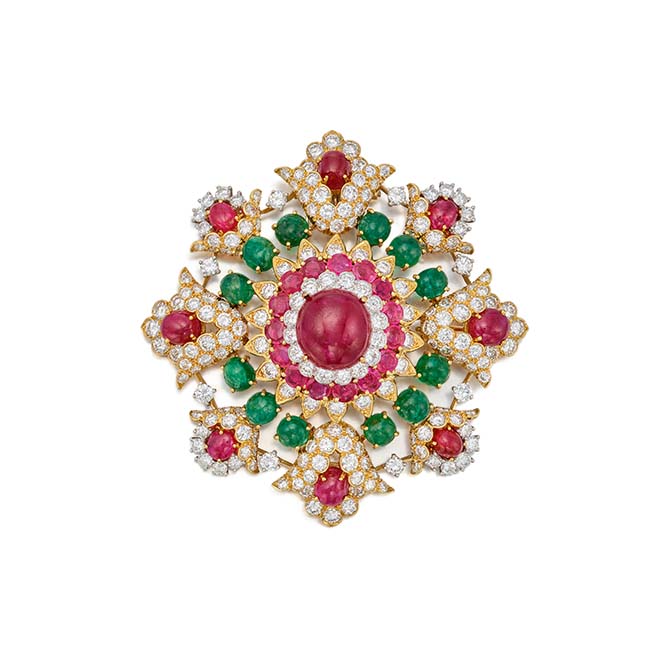
Veering away from American creations is perhaps one of the biggest points of difference between the jewelry and most of the other categories in The Wolf Family Collection. Yet it makes sense in the framework of what Erving and Joy wanted. Only a few American Houses produced jewels that fell within their design parameters.
The jewels aligned with Joy’s fashion sensibility and represented the pinnacle of what was in vogue. “My mother was always very stylish,” remembers the couple’s son Matthew Wolf.
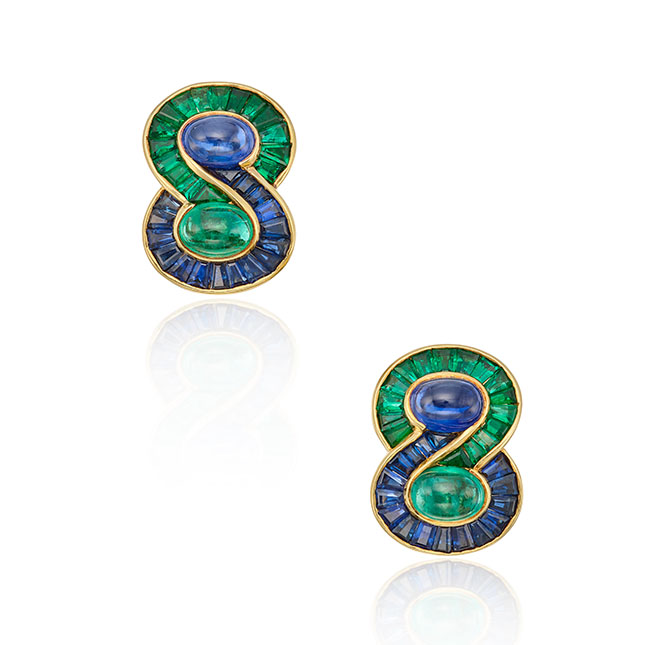
The Wolf’s enthusiasm for jewelry dates back to the days when they started collecting in the 1960s after relocating from Cheyenne, Wyoming to Denver, Colorado. “The move brought them closer to the Navajo Indian Reservation,” explains Matthew. “They would attend fairs and started collecting rugs and pottery, but the jewelry was the first thing they were looking for.”
When the Wolfs moved to New York City in 1971, they lived on Fifth Avenue and 77th Street one block from Sotheby’s old location at 980 Madison Avenue. The proximity to the auction house practically made it a home away from home. After school, Matthew would meet his mother there and do homework in the sales room.
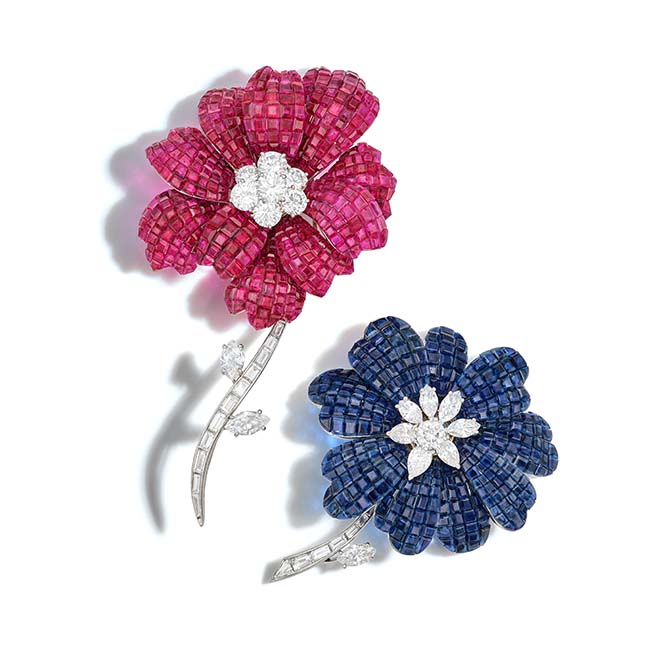
The Wolfs lingered at Sotheby’s to learn about the offerings and buy across categories including 20th century jewelry. “I remember when I was young my parents talking about jewelry and how beautiful it was,” says Matthew.
Other resources for the collection included galleries and boutiques. “My father would say to my mother, ‘Let’s go to Van Cleef and see what they have,’” remembers Matthew.
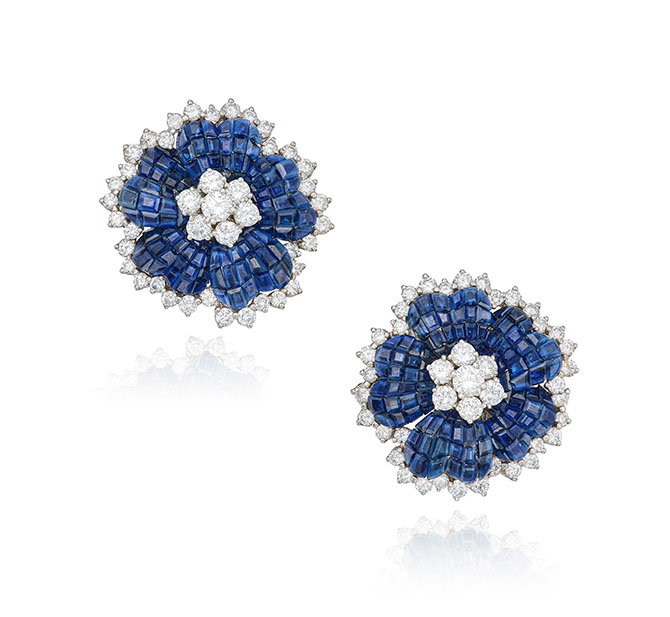
Nine mystery-set jewels by Van Cleef & Arpels form the centerpiece of the Wolf’s collection. Patented by the French firm in 1933, the mystery setting involves a masterful technique that makes it appear as though there is no metal holding the gems blanketing the surface of the jewel.
In order to achieve the effect, not only does each gem have to be specially cut for size to fit in the design, they also have to be carefully grooved on the sides in order to slide on the hidden tracks in the setting. The most impressive mystery set jewels have naturalistic curves like the two flower brooches in The Wolf Family Collection.
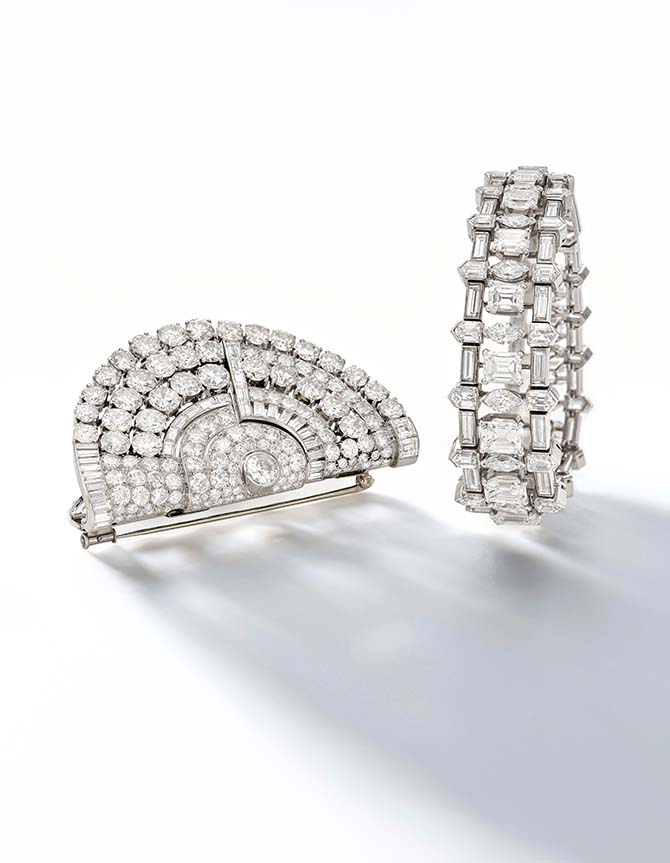
The small handful of all-diamond pieces in the collection reveal the essence of the design flair Erving and Joy sought. The boldness in the Dusausoy diamond and onyx clip brooch makes it easy to understand how the French jeweler walked off with a Grand Prix at the 1925 International Exposition in Paris that launched the Art Deco movement.
The way various shapes of diamonds swing around the semi-circular Van Cleef & Arpels double clip brooch made in the mid-1930s infuse the statement piece with a sense of movement.
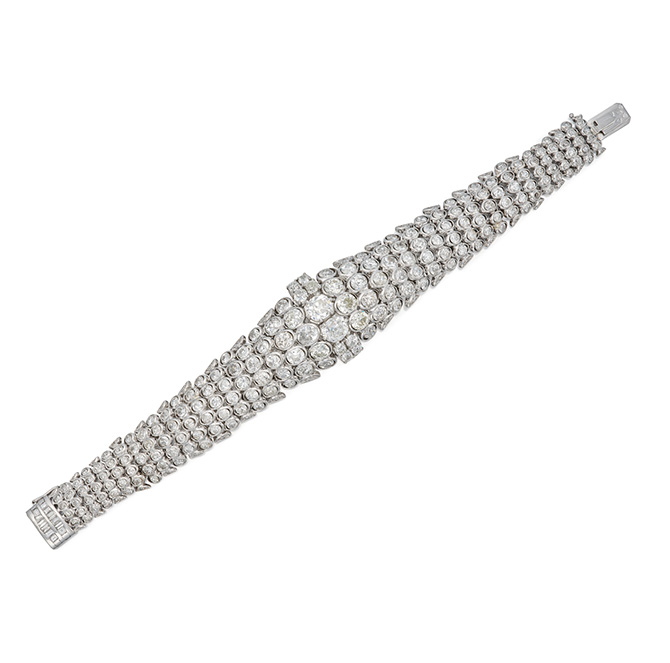
A marvel of engineering, the over 35-carat diamond René Boivin fish-scale bracelet transforms into a dazzling openwork pattern when it is wrapped around the wrist.
A superlative pair of Harry Winston marquise and pear shape diamond cluster earrings are in the selection as well as an exquisite almost 40-carat Van Cleef & Arpels diamond bracelet with emerald, marquise, bullet and baguette cuts forming a tapered ladder silhouette.
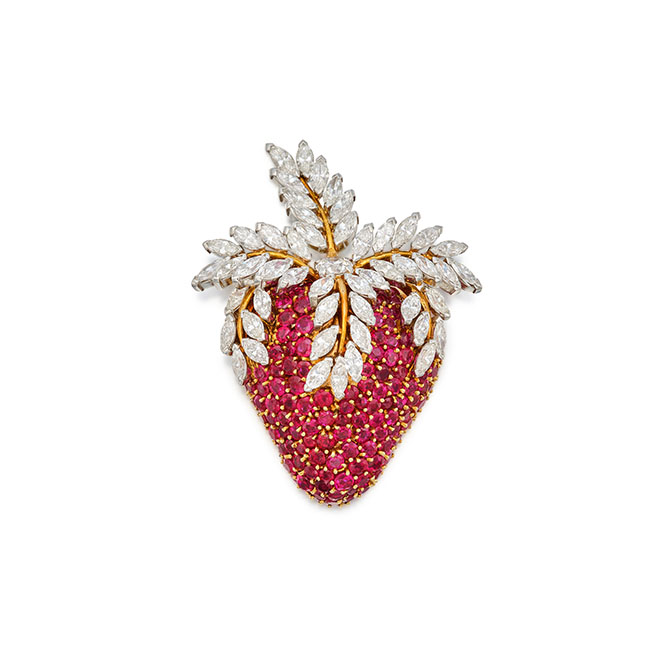
Among all her jewels, Joy’s favorite was a ruby and diamond strawberry brooch by Jean Schlumberger for Tiffany. Sculptural and jubilant, the fruit brooch exemplifies the designer’s work. Round rubies give the strawberry texture.
The 49-marquise shaped diamonds set in the long leaves curl and twist in a natural way. “I try to make everything look as if it were growing, uneven, at random, organic, in motion,” the designer once explained.
The jewels in The Wolf Family Collection were not usually purchased to memorialize an occasion. Similar to the way they collected art and decorative arts, the couple acquired special pieces when they found them. “Jewelry was always a very positive experience in their relationship,” recalls Matthew. “My mother loved wearing the jewelry—which she would do all the time even at home during family dinners—and my father loved seeing her in the jewels.”
Related Stories:
What Inspires David Michael’s Jewelry Designs?
Kim Kardashian Buys A Jewel Diana Wore Once
Get a gem in your mailbox SIGN UP FOR THE ADVENTURINE NEWSLETTER
